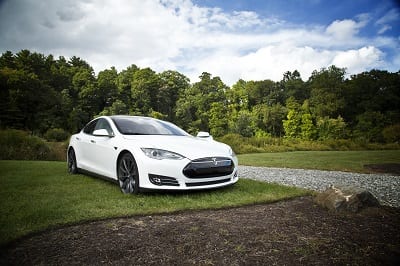Tesla’s “Master Plan, Part Deux” Pushes Innovative Business Leadership

On July 20, 2016, Tesla Motors’ CEO Elon Musk released a blog entitled “Master Plan, Part Deux”. The highly anticipated document identified several key changes to Tesla’s business model and also unveiled some of the newest, most innovative technologies that Tesla is working on.
Among some of the most notable changes, Tesla may be modifying the company’s name, introducing ride sharing services to compete with Uber and Lyft, improving autonomous driving functions, introducing new vehicle models, and building solar panels for households.
This innovative, value-driven approach to business is what has made Tesla so successful to date. Now pursuing alternate industries and products to diversify its offering, Tesla is a serious force to be reckoned with. Businesses across all industries should look to adopt Tesla’s innovative mindset to remain competitive, otherwise they may be negatively impacted in a technology-driven world of continuous improvement.
How Tesla is Adapting to Consumer Preferences
There are several exciting changes that might be on the way for Tesla Motors. The company will continue its push to become the most innovative company in the world, bringing a new generation of electric vehicle development that is more accessible for consumers. Here are some of the ways that Tesla is seeking to accomplish this:
Adapting the Company’s Name to Encompass a Greater Mission
Although changing the company’s name was explicitly listed Musk’s newest master plan, it was certainly a theme of the article. Tesla is growing to become more than just an automotive company – they are becoming a technology company who happens to manufacture vehicles.
Tesla’s formal company name, Tesla Motors Inc., encompasses a dated view of the company. Suggesting that Tesla is only an automotive company ignores a much bigger, more innovative concept of what the company stands for. As pointed out in the sections below, Tesla envisions becoming a renewable energy enterprise. Automobiles are simply one piece of overall dream.
In terms of changing the company’s name, nothing official has been released to suggest this will actually happen. However on July 18 – just two days before Musk’s ‘Phase Deux’ announcement – the company shortened its website’s domain name from www.teslamotors.com to www.tesla.com.
Would it be surprising if the company followed through with legally changing its name? No.
This is simply one of the steps required for Tesla to actualize the goals outlined in ‘Phase Deux.’ Besides, it’s not like they would be the first innovative company to modify their name in order to grow. ‘Apple Computer’ also did it in 2007 to revolutionize the smartphone and music industries.
Autonomous Vehicle Transportation
 On the surface it may seem like Tesla is following the autonomous vehicle trend, however the company’s plans for using this technology is truly innovative.
On the surface it may seem like Tesla is following the autonomous vehicle trend, however the company’s plans for using this technology is truly innovative.
Tesla has been researching and developing self-driving cars for years but it may take several more until it can get fully autonomous models out to consumers. While the cameras, radar, sonar, and computing systems have all reached a point where the concept is viable, there is still considerable testing and validation that needs to occur before consumers can get a piece of this technology, as well as government regulations for each region that adopts the automonous system.
But prepare yourself for when the technology is ready for wide-scale release. Tesla is planning to revolutionize transportation.
Tesla’s plan includes rolling out a fleet of self-driving cars in major cities across the world. What this means is that instead of calling for a taxi, Uber, or Lyft service, consumers will be able to hail a Tesla car that is programmed to take them from one destination to another. No drivers are required, meaning that costs are lowered and (theoretically) your chances of getting into an accident while travelling are decreased.
Even more exhilarating is that Tesla owners of the future could use the same technology to transform their personal vehicle into a revenue generator. At work or on vacation? Use your Tesla’s self-driving capabilities to pick up and drop off passengers. This functionality alone could help Tesla drivers dramatically reduce the cost to lease or own one of the vehicles.
Related Blog: Automotive Software Development Centre Fuels Innovation in Markham, Ontario – General Motors is improving its autonomous driving and connected technologies by investing in automotive engineers. Learn about their new facility in Markham, Ontario.
Electric Commercial Trucking and Public Transportation
Why stop at consumer-level vehicles? Tesla understands that for a low-carbon economy to become within our grasp, electric vehicle technologies must be extended to commercial-grade trucks and public transportation.
The transportation of goods presents a substantial cost for businesses. Fuel and driver costs present significant expenses that are incurred by businesses but ultimately passed along to consumers.
But does it have to be that way? If Tesla creates electric commercial trucks that include autonomous driver technology, it would revolutionize the way businesses operate.
Public transportation also emits a high amount of carbon into our atmosphere. Implementing electric busses on city streets would cut down on emissions and help jurisdictions move closer to carbon-neutrality.
Autonomous vehicle technology would also transform public transportation in terms of costs, routes taken, and the way that busses are constructed. Without needing space at the front of the vehicle for a driver to sit, seating layouts could be redesigned to provide increased capacity.
Never Miss Business Trends or Canadian Government Funding News: Receive Mentor Works’ Small Business Funding Newsletter
Development of Next-Generation Solar Panels
Elon Musk also suggested that Tesla and SolarCity should merge companies to provide a complete clean energy driving experience.
SolarCity, owned in part by Musk, is a leading solar panel manufacturer that is committed to helping its customers reduce their dependence on the electrical grid. Homeowners can reduce total energy costs by up to 90 percent given the technology currently available, and this energy could be used to charge consumer electric vehicles.
Tesla envisions itself as being a “one ordering experience, one installation, one service contact, one phone app” company. Combining with SolarCity would mean that Tesla is a complete service that lets consumers:
- Generate renewable solar energy;
- Store energy with Tesla’s Powerwall technology; and
- Use the stored energy to recharge vehicle batteries and power homes.
Home solar panels will continue to become more efficient throughout time, which makes this plan incredibly feasible. Solar panels are not efficient enough to be located directly on vehicles yet, however utilizing rooftops or yards to generate energy will enable Tesla vehicles to keep running on cheap, clean, and renewable energy.
08/22/16 Update: Tesla Buys Solar City for $2.6 Billion
Tesla Sets the New Standard for Business Innovation
Tesla’s plans need to be taken seriously by businesses in a wide range of industries, not just automotive companies. Their commitment to radical innovation will change the way people live, and by doing so, will become an untouchable leader in the marketplace. The only way that businesses will be able to keep up with Tesla is to commit to their own internal research and development projects and provide new offerings.
As my colleague Chris Casemore put it, businesses should be discovering “new, innovative ways of conducting business and uncover markets with little to no competition.”
Canadian Research Grants for Small Business Innovation
If your business has ideas about how to innovate products, services or processes, Canadian government funding may help you conduct the necessary R&D. A few of the small business grants that may be able to assist you include:
- IRAP Funding: There are two common IRAP research grants that can be used for small and mid-size research projects. IRAP ARP funding supports internal and contractor labour expenses to a maximum $50,000 while IRAP Mid-Size funding will support internal labour costs to a maximum $500,000.
- Automotive supplier Innovation Program (ASIP): Canadian government grants support product and process development in the automotive industry. Companies creating innovative products or refining production methods may receive up to 50% of eligible project costs to a maximum $10 million in grant funding.
- SD Tech Fund: Companies researching sustainable energy generation, green technologies, and waste management solutions may be eligible for up to 33% of eligible project expenses. Grants are typically valued between $200,000 and $15,000,000 for R&D projects that typically span 2-3 years in length.

